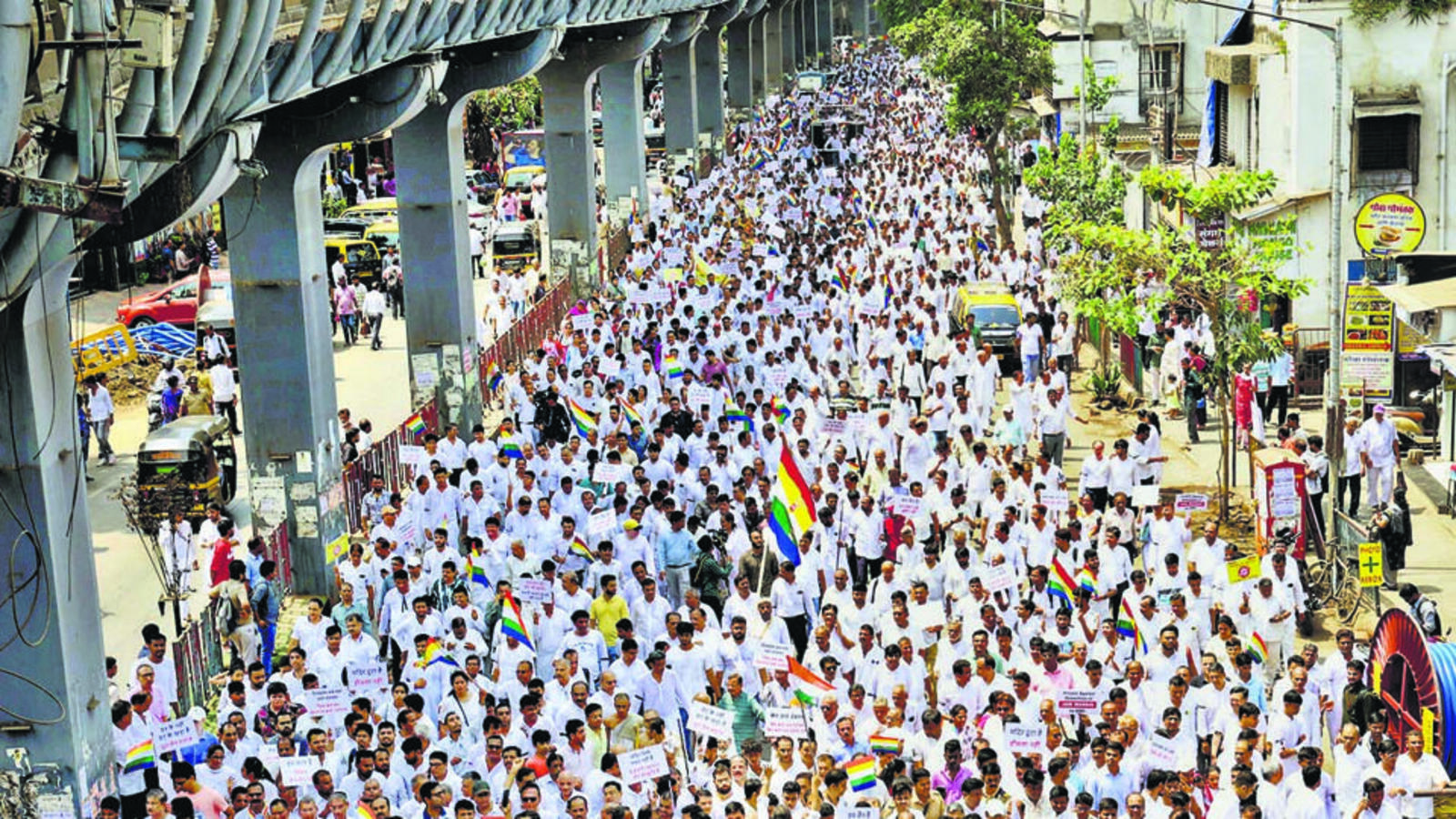Jain Temple Demolition Sparks Outrage, BMC Official Transferred
Politics Politics of IndiaPosted by AI on 2025-04-20 10:44:46 | Last Updated by AI on 2025-12-19 22:12:30
Share: Facebook | Twitter | Whatsapp | Linkedin Visits: 12

"We were shocked. How could they demolish a place of worship, especially when there was a stay order?" This anguished question from a member of the Jain community in Vile Parle underscores the growing outrage over the Brihanmumbai Municipal Corporation's (BMC) demolition of a Jain temple. The incident has ignited protests and led to the swift transfer of a ward officer, raising serious questions about the legality and sensitivity of the BMC's actions.
The demolition, which took place recently, has sent shockwaves through the Jain community. Devotees allege that the BMC acted illegally, disregarding a stay order that was in place to protect the temple. The scene on the ground was one of disbelief and anger as the community watched a structure of religious significance being reduced to rubble. The protests that followed were immediate and vocal, with community members demanding accountability and justice. They questioned the BMC's motives and the apparent disregard for due process, pointing to the existing stay order as clear evidence of wrongdoing. The incident has also highlighted the sensitive issue of religious structures and the importance of respecting the sentiments of different communities.
The BMC's response to the incident has been swift, with the transfer of the ward officer responsible for the area. While this action may be perceived as an acknowledgement of the gravity of the situation, it has done little to quell the anger within the Jain community. Many see the transfer as a superficial measure, demanding a thorough investigation into the circumstances surrounding the demolition. They are calling for those responsible to be held accountable, emphasizing the need for transparency and justice. The incident has also raised concerns about the BMC's internal processes and the oversight of demolition activities.
The demolition of the Jain temple in Vile Parle is not just an isolated incident. It brings to the forefront the complex relationship between urban development and the preservation of religious and cultural heritage. The incident has sparked a broader discussion on the need for greater sensitivity and respect for religious structures, especially in a diverse city like Mumbai. The protests and the subsequent transfer of the ward officer underscore the importance of community engagement and dialogue in addressing such sensitive issues. It remains to be seen what further actions the BMC will take in response to the community's demands for accountability and justice. The incident serves as a stark reminder of the need for careful consideration and adherence to legal processes when dealing with matters of religious and cultural significance. This incident will likely be a focal point in future discussions regarding urban development and religious freedom in Mumbai.
Search
Categories
Recent News
- Hyderabad's Drug Bust: Unveiling a Complex Network
- Hyderabad's Fight Against Cybercrime: A New Approach
- Hyderabad Gears Up for Presidential Visit, Traffic to Be Affected
- Hyderabad's Traffic Transformation: A Multi-Agency Effort
- Digital India's Dark Side: Elderly and Vulnerable Targeted
- Hyderabad Gears Up for Christmas Feast: Traffic Diversions in Store
- Hyderabad's Homicide Surge: A City on Edge
- Hyderabad's Biryani Scam: When Food Delivery Meets Fraud
Popular News
- Navigating IPO Market Dynamics Amid Volatility and Regulatory Changes
- Innovative Green Practices and Environmental Initiative
- Massive Worldwide Microsoft Outage Disrupts Multiple Sectors
- తెలుగుదేశం పార్టీ - పేదరికాన్ని నిర్మూలించడంలో వాగ్దానం
- Universities Embrace Remote Learning Technologies Amidst Ongoing Pandemic